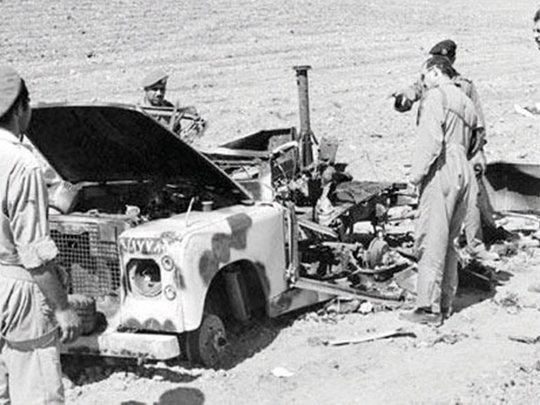
Dubai: The Palestine Liberation Organisation was founded in 1964 with the purpose of liberating Palestine through an armed struggle. The idea behind the formation of the PLO was also to centralise the leadership of different Palestinian factions taking part in resistance operations against the Israeli occupation regime clandestinely. The PLO is an umbrella group representing the Palestinian people everywhere, and is recognised as the “sole legitimate representative of the Palestinian people” by over 100 states with which it has diplomatic relations. Before entering into negotiations with Tel Aviv in the early 1990s, the PLO had engaged in a bitter guerrilla struggle against Israel throughout the 1960s, 70s, and 80s, not only in the Occupied Territories but also abroad.
The PLO is a secular organisation that adopted an anti-Zionist stance. At the heart of its ideology is the belief that the Zionists illegally usurped the land the Palestinians had always called home, and imposed on them a brutal military occupation.
The PLO is not a monolith but an entity that incorporates ‘numerous organisations of the resistance movement, political parties, and popular organisations’. Fatah, the PLO’s largest faction, is a secular, left-wing nationalist movement that leads the Palestinian government. The other factions that make up the PLO include the Popular Front for the Liberation of Palestine, the Democratic Front for the Liberation of Palestine, the Palestinian People’s Party, the Palestine Liberation Front, the Arab Liberation Front, Al Sa’iqa, the Palestinian Democratic Union, the Palestinian Popular Struggle Front, and the Palestinian Arab Front.
The PLO has held observer status at the United Nations since 1974.
It operated from other Arab countries, notably Jordan. But, in 1970, it suffered a reversal in its fortunes with Jordan’s assault on its armed factions in what came to be known as Black September. Jordan expelled the Palestinian factions. Following Black September, the Cairo Agreement enabled the PLO to establish itself in Lebanon.
Heightened tensions between the PLO factions and right-wing Christian militias in Lebanon sparked the Lebanese Civil War involving multiple groups, which went on from 1975 to 1990.
In the early 1990s, the PLO began negotiations with Israel, and in 1993, it recognised Israel’s right to exist, accepted UN Security Council resolutions 242 and 338, and rejected violence. In response, the Israeli regime officially recognised the PLO as the representative of the Palestinian people.
The signing ceremony of the Oslo Accords was held on the lawns of the White House on September 13, 1993, following which there was a bigger opening for Palestinains in the US; Yasser Arafat became a frequent visitor to the White House after that. After Oslo, the US administrations also became more involved in the Israeli-Palestinian “peace process”.
In 1994, the PLO opened its office in Washington, which President Donald Trump has now threatened to close. The PLO is represented in Washington by a General Delegation. The US doesn’t have a diplomatic presence in Palestine, but deals with the Palestinians through its consulate in Occupied Jerusalem.











